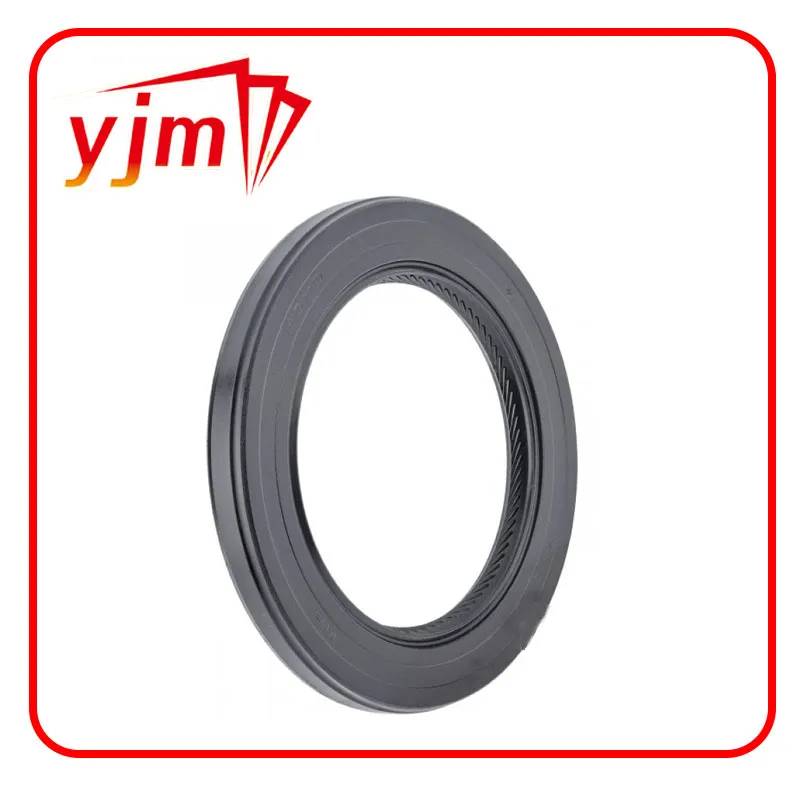different types of o rings
Different Types of O-Rings An Overview
O-rings are essential components used in a variety of applications, primarily to create seals between two parts and prevent the leakage of fluids or gases. These simple yet effective rings are made from a variety of materials and come in different sizes, shapes, and designs to suit specific applications. Understanding the different types of O-rings is crucial for engineers, technicians, and anyone involved in mechanical design and applications.
1. Materials Used for O-Rings
The performance of an O-ring largely depends on the material used to manufacture it. Here are some common materials
- Nitrile Rubber (NBR) This is one of the most widely used materials for O-rings due to its excellent resistance to oils, fuels, and hydraulic fluids. NBR O-rings are suitable for applications in the automotive and aerospace industries where oil exposure is common.
- Fluorocarbon (FKM) Known for its high-temperature resistance and chemical compatibility, FKM O-rings are ideal for harsh environments, including chemical processing and aerospace applications. They can withstand extreme temperatures and aggressive chemicals, making them a popular choice in many industries.
- Silicone O-rings made from silicone are recognized for their excellent temperature stability and flexibility. They can operate in both high and low-temperature environments and are often used in food processing, medical devices, and applications requiring high levels of hygiene.
- Polyurethane Known for its durability and resistance to abrasion, polyurethane O-rings are often used in dynamic applications where wear is a concern. They can handle a range of temperatures and are frequently applied in hydraulic and pneumatic systems.
- EPDM (Ethylene Propylene Diene Monomer) This type of rubber is well-suited for outdoor applications due to its excellent resistance to ozone, UV light, and weathering. EPDM O-rings are commonly used in plumbing and automotive applications.
2. Types of O-Rings Based on Design
Apart from material, O-rings can also vary in design. Here are some distinct types
- Standard O-Rings The most commonly used type, which is based on the standard AS568 size chart. They’re available in various sizes and materials.
different types of o rings

- Backup Rings These are used in conjunction with O-rings to prevent extrusion under high pressure or when the O-ring is subject to lateral movement. Backup rings come in either solid or split designs and are crucial for extending the life of the O-ring in high-pressure applications.
- X-Rings (Quad Rings) X-rings, or quad rings, have four sealing surfaces instead of the two found in standard O-rings. This design reduces friction and improves sealing capabilities in dynamic applications, making them ideal for high-speed rotary applications.
- V-Rings Unlike traditional O-rings, V-rings are used to seal rotary shafts and provide a tight seal while allowing for a larger range of motion. They are effective in protecting against dirt and contaminants in various industrial applications.
3. Applications of O-Rings
O-rings have a broad range of applications across multiple industries
- Automotive O-rings are commonly used in engines, transmission systems, and fuel systems to prevent leaks.
- Aerospace In aircraft, O-rings are critical for seals in hydraulic systems and fuel systems, where reliability and safety are paramount.
- Manufacturing Many industrial machines utilize O-rings in hydraulic and pneumatic systems to maintain pressure and prevent leaks.
- Medical Devices O-rings are crucial for ensuring a sterile environment in medical equipment, where materials like silicone are often preferred.
- Consumer Products From plumbing fixtures to kitchen appliances, O-rings help in maintaining the integrity and performance of consumer goods.
Conclusion
In summary, O-rings are vital for ensuring effective sealing in countless applications across various industries. The choice of material and design significantly impacts their performance, longevity, and suitability for specific tasks. As technology continues to evolve, the development of new materials and designs will further enhance the capabilities of O-rings, making them indispensable components in modern engineering and manufacturing. Understanding the different types of O-rings can help professionals make informed decisions, ensuring optimal performance and reliability in their applications.
-
The Ultimate Guide to Boat Propeller Bearings and Trailer Wheel Bearings
News Jul.31,2025
-
The Essential Guide to Marine Bearings and Boat Trailer Wheel Bearings
News Jul.31,2025
-
The Complete Guide to Heavy Duty Seals: Protecting Doors and Spaces Efficiently
News Jul.31,2025
-
Essential Guide to Marine Shaft Bearings and Boat Trailer Axle Bearings
News Jul.31,2025
-
Comprehensive Guide to Marine and Trailer Bearings for Safe Boating and Transport
News Jul.31,2025
-
Comprehensive Guide to Automotive Oil Seals: Protecting Your Engine and Shafts
News Jul.31,2025
-
Understanding Automotive Oil Seals: Essential Components for Engine and Shaft Protection
News Jul.30,2025
Products categories















